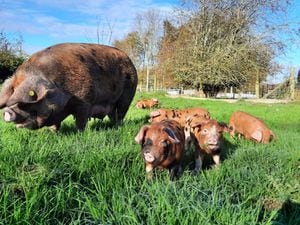Feeding live yeast can help alleviate impact of heat stress in pigs
As temperatures soar above 20C, heat stress is a cause for concern for pig producers, due to the negative consequences it can have on feeding behaviour, growth rates and animal welfare, adding to the current challenges the industry are facing.

Recent microbiota studies highlight how feeding the live yeast Saccharomyces cerevisiae boulardii CNCM I-1079 can help alleviate the effects of heat stress through positive microbiota modulation – the process of manipulating the microbiome to improve overall gut health.
Scientists have shown a relationship between the gut microbial composition and the pig’s metabolic adaptation to heat stress. Manipulating the microbiome can therefore preserve feeding behaviour, energy utilisation, and utlimately growth performance.
A trial was conducted in partnership with INRAE Pegase (France) to evaluate the impact of heat stress on the energetic metabolism and feeding behaviour of pigs.
Ten finishing boars were housed for 20 days in respiration chambers under thermoneutrality (seven days at 22C) and then under heat stress conditions (seven plus six days at 28C). They were fed either a diet with or without the live yeast Saccharomyces c. boulardii CNCM I-1079 (Levucell SB).
Thanks to high-throughput sequencing techniques (16S metabarcoding), this study also provided new insights on the key role of the digestive microbiota under thermal stress conditions.
Recent research has shown that both short-term and chronic heat stress challenge has an impact on the microbiota composition. However, pigs fed the live yeast, Levucell SB, were found to have higher levels of positive bacteria present, which correlated with higher dry matter intake and energy retention.
Via the use of respiratory chambers, the trial also evaluated the benefit of Saccharomyces c. boulardii CNCM I-1079 on pig metabolism.
Under heat stress, pigs tended to eat less and divert their energy metabolism from growth to ensure thermoneutrality.
The trial highlights the benefits of feeding the live yeast, indicating positive outcomes for animal welfare, metabolism and performance.
While heat stress decreased feed intake in all animals, the pigs fed the live yeast showed higher feed intakes due to larger numbers of meals per day and longer meal duration compared to the control group. At the end of the trial, feed intake was also more stable in these pigs than when we compared the heat stress periods with the thermoneutrality periods.
The Levucell SB-fed pigs had lower skin temperatures compared to the control pigs and we also found these pigs had increased energy retention under heat stress versus the control. It could be explained in part by the improved gut microbiota balance.
As a result of the above improvements, growth performance was better preserved when feeding the live yeast under heat stress: average daily gain was increased from 1.14 to 1.28 kg/d (P=0.03).
While there has been a large number of trials on the feed utilisation and pig performance benefits of using Levucell SB, this recent data highlights that the physiological and financial benefits of feeding a specific live yeast can increase during periods of high stress.
Hannah Elliott is monogastric technical manager at Lallemand Animal Nutrition





